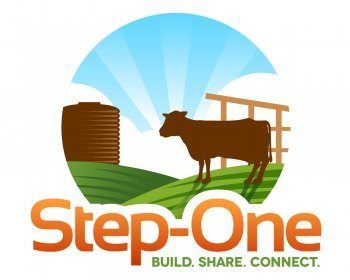The current agricultural system in most developing countries is that of subsistence farming. This can provide almost all of the goods required by the family but offers no significant surplus. It provides a minimum and often inadequate return to the family. Subsistence farming is not an ideal farm enterprise but rather a method employed to simply survive. Our effort is to place model farms directly into the community to demonstrate infrastructure options along with education on sound agricultural practices. Once people see and understand the concept and benefits they have the knowledge to move towards more sustainable agriculture.
COMPONENTS OF A MODEL FARM
- A cowshed for protection from the elements and an additional exercise pen.
- A water catchment unit that uses a gutter and tank system for harvesting rainwater that can be used by livestock and human consumption.
 |  |  |
| A cowshed for protection from the elements and an additional exercise pen. | A water catchment unit that uses a gutter and tank system for harvesting rainwater that can be used by livestock and human consumption. |
- An exotic cow that has a level of milk production that exceeds the traditional or local breed of cattle.
-
Education as to the use of sound animal husbandry practices ranging from basic health care to proper nutrition and hydration.
 |  |  |
We have been very successful at establishing these demonstration units in various rural primary schools in east Africa. School settings provide a central location where neighboring families and community leaders can visit and experience how sustainable practices work within an organized framework. Direct exposure to these practices increases the opportunity for their adoption at the family farm level.
There are numerous benefits to those schools that have a working farm on site. For example, the cow produces daily amounts of milk which addresses the direct protein needs of the children. The manure becomes an excellent source of fertilizer for the school garden. If there is no existing rainwater catchment system in place, we will redesign our model to gutter and tank one of the school buildings in order to harvest enough water for the children as well as the livestock. Teachers can also use the instructional information we provide to build upon lessons in the classroom.
[ SEE PHOTO GALLERY ]
